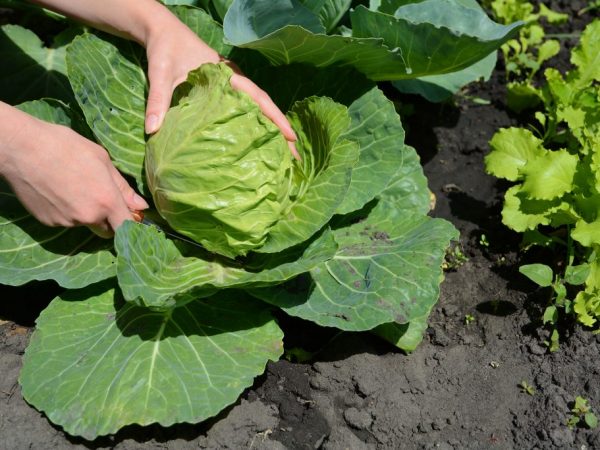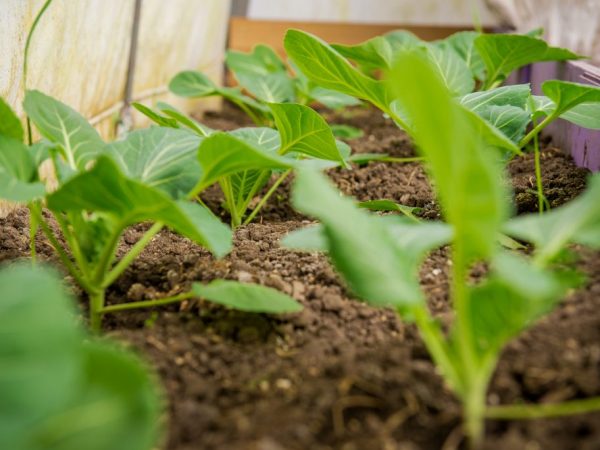Description of the June cabbage variety
June cabbage is popular among gardeners due to its early ripening period. Its name speaks for itself: in June the cabbage is ready to eat.

Description of the June cabbage variety
Characteristic
According to the description, early June cabbage has:
- rounded shape;
- a characteristic green color, closer to the middle, smoothly turning into yellow-green;
- the average length of the stump;
- vegetative period 90-100 days;
- head of cabbage weight 1-2 kg;
- yield 5-7 kg per 1 sq. m.
Advantages and disadvantages
White June cabbage has a high yield with a short ripening period. Also, when planted in open ground, cabbage is resistant to spring frosts, capable of withstanding frosts down to -5 ° C:
- the head of cabbage is dense, does not crack with abundant watering;
- contains a large amount of vitamin C;
- has a delicate, crunchy taste and is suitable for all types of spring-summer salads.
According to the characteristics, the Early June cabbage variety also has disadvantages: the fruits have a short shelf life and they lose their taste when heat treated or sourdough.
Planting varieties
You can plant the variety in any soil conditions, but in order to get a good harvest, you need to follow some rules for the selection of such a vegetable.
Seeds
The first thing to do before planting early kale is to select premium seeds. In this case, you should not experiment, preference is given to proven seeds. They are purchased from a quality manufacturer, since the seeds may be unlicensed and unsuitable for sowing due to improper storage conditions. Be sure to pay attention to the shelf life: it is impossible to sow expired material, the germination guarantee is reduced to 20%.
The soil
The soil for growing seeds is prepared in the fall.
To do this, mix sod land and humus (1: 1), add ash to them (10 kg of a mixture of 10 tbsp. L.). All this is thoroughly mixed. Ash prevents the appearance of diseases of the root system, is a natural antiseptic; it is rich in useful micro and macro elements. Instead of sod land, peat can be used.
It is important that the prepared mixture turns out to be fertile, loose and easily pass oxygen to the root. The land from the garden, on which cruciferous plants were previously grown, cannot be used: it has a high content of microorganisms, which has a detrimental effect on the development of vegetables.
Sowing time

Seedlings are planted after 50 days
For sowing early cabbage seeds, the optimal period is from March 1 to March 28. In some regions of Russia and Ukraine, this period has been shifted to an earlier date: mid-February - mid-March.
The germination time of seeds in the soil, from sowing to the appearance of the first shoots, is 10 days. The time from the appearance of the first shoots to planting in open ground is 50-55 days.
Sowing seeds should take place 60-65 days before planting, and 30-35 days after planting, the seedlings are harvested.
Seed treatment
Almost all seeds sold in stores have been processed.This should be indicated on the packaging. If this does not happen, you will have to perform the processing yourself.
There are many ways to treat seeds before sowing: soaking in aloe, in ash solution, in potassium permanganate, in hydrogen peroxide.
The most common processing method is to heat the seeds in hot water (50 ° C.) For 20 minutes (you can use a thermos for this). After the seeds are cooled with cold water (5 minutes). Thus, the plant's resistance to diseases of the root system increases.
Sowing and picking
Seeds are sown in prepared trays or boxes with soil, the soil is well moistened. To prevent the possibility of developing diseases, after sowing and before the first shoots appear, the soil is not watered.
After emergence, the first shoots are thinned out, leaving one seedling an area of 2 x 2 cm.When the seedlings grow a little (1 or 2 leaves will appear on the seedling), they dive. The picking area is 3 x 3 cm.
2 weeks after the pick, the seedlings are again transplanted into pots (plastic or peat). The transplant tank has a surface area of 5 x 5 cm.
Seed growing can take place in separate pots. With this method of sowing, the root system is not injured, it has a fairly large volume.
Lighting
For the good development of seedlings and the plant's root system, there is very little daylight, therefore, a fluorescent phytolamp is used. Seedling lighting lasts 14 hours a day.
Temperature
When growing seedlings, monitor the temperature in the room. High air temperature is especially harmful. Before the emergence of the first shoots, the optimum temperature is 18-19 ° C, after the seedlings emerge, the temperature should not be lower than 15-17 ° C during the day and 8-10 ° C at night. Such drops prevent the plant from stretching, contribute to the strengthening of the root system.
Top dressing
When the plant is in pots or cassettes, it needs regular and balanced nutrition.
Fertilizers based on nitrogen, phosphorus and potassium are suitable as top dressing. Top dressing is carried out 3 times: a week after sowing, 2 weeks after the previous top dressing and a few days before planting in open ground.
Hardening process
In order for white cabbage to take root well in the soil, hardening is carried out. The procedure is performed 10 days before planting in open ground.
The first couple of days in the room where the seedlings are located, open the window for 2-4 hours. In the next 4 days, the seedlings are moved to the street or balcony at the same time. To protect from direct sunlight, the seedlings are covered with gauze.
After a week, the seedlings remain on the street, while reducing watering, while preventing the soil from drying out.
It is advisable to plant a plant after the formation of 4-5 full-fledged cabbage leaves.
Conclusion
June cabbage will give a rich and healthy harvest if certain planting and growing rules are followed.


